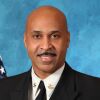Download the FireRescue1 digital edition “Dirty Helmet Syndrome: Are you afflicted?”
For many years now, a firefighter’s gear has been directly related to the perception or image of a certain level of bravado.
Nearly three decades ago, when I first came into the industry, I felt that my gear would clearly illustrate my intentional hard work in austere circumstances and environments. I felt that courage and commitment to the mission could be concluded from the gear that I wore.
In the early 1990s, as it had been for many years prior, everyone’s turnout gear was similarly dirty. But our helmets were uniquely ours and seemed to hold a different level of attention to our peers. The dirtier the helmet, the harder I must have worked, or displayed the horrible conditions that were endured during the battles with the beast. Some suggested, “If you wash/clean your helmet, you will surely negatively impact your chances of catching another fire in the near future.” So crews actively discouraged clean helmets.
Today, we call this skewed perception “Dirty Helmet Syndrome.” Why a syndrome? It is a pattern of symptoms – a combination of a variety of opinions, emotions and behaviors. Fortunately, like many of you reading this, I became more informed of the hazards that accompanied my “syndrome.” I slowly began to disengage my bad practices, and as a young officer, I began to encourage better maintenance of our ever-so-important protective equipment, including our coveted helmets.
Spread the word to make the change
I recall one instance early in my career, while attending an advanced handline class at our state fire academy, in which I was challenged by a firefighter from a considerably smaller department. He mumbled, “I thought you guys from Atlanta fight a lot of fires. Your gear isn’t that dirty.” Of course, I initially jumped to the offense and advised him, “We walk into fires and put them out and go home – we don’t roll around in the burned debris to get our gear dirty.”
In retrospect, I would have served my fire service brother better if I had shared with him my recently learned education about the cancerous hazards associated with dirty gear.
More than two decades have passed since that interaction, and I’ve experienced many more challenges over the years. I’m proud to say that each of the additional challenges, pertaining to clean gear, were handled appropriately by means of a quick education lesson on clean PPE.
Where can improve
With industry-wide pushes to educate our firefighters and the public on the hazards of dirty PPE, I believe that we have made drastic improvements on a national level.
Atlanta Fire Rescue, for example, issues two sets of turnout gear to every firefighter, and our Foundation has invested heavily in extractors that clean our turnout gear. Although we are unable to put extractors in every station, we do have extractors decently distributed throughout our city’s seven battalions.
Is that enough? I suggest no. Anyone can easily pick out several shortfalls within our industry’s current situation and focus.
1. Two helmets: Most of our departments, large and small, do not provide our personnel with two helmets to interchange while the other is being cleaned properly. With turnout gear costing just under $2,000, it does not seem like a $400 helmet would be a dealbreaker. But tight budgets make it very difficult to deviate funds that purchase apparatus, keep the lights on, fund supplies, and fuel the apparatus or even salaries for paid departments. Feasible but difficult purchases usually produce postponement or total inaction.
2. Inner shells: The inner shell of a helmet is exposed to the same harsh carcinogens as the outer shell of the helmet. For those who try to keep their outer shells clean, they are faced with the reality of their inner shell continuing to have the same hazardous debris in the fabrics of the part that comes in contact with our head. Futile attempts are frequently made by those who choose to rinse/wash the liner of the inner shell. This typically results in a sour-smelling shell liner that makes anyone promise to never do it again. Firefighters will typically not wash the inner shell’s liner to avoid the sour smell from a poorly dried fabric. This comes with concerns as we consider the probability of helmets being damaged during frequent swap-outs.
3. Policies: It is one thing to have best practices in place, but it’s another thing to have policies that are followed or enforced. We all know organizations that have gear policies, but most are poorly enforced. Complaints and progressive discipline are rare related to dirty gear. In fact, I will offer that these are VERY rare when compared to dress code violations concerning station apparel. This can be tracked down and attributed to failures at all levels of any organization.
4. Culture: Ultimately, the adopted or promoted culture of an organization is the driving force of the behavior of our most valued assets. Accountability is directly related to the culture and is impacted accordingly. We as an industry must continue the fight to change the minds, perceptions, behaviors and practices of those who do the phenomenal brave work that our profession requires.
Take action
Many of us have been unsuccessful at explaining why our members continue to adopt Dirty Helmet Syndrome behaviors or perception. I believe that as professional organizations, it is imperative that we listen to our members and hear their “why.”
It takes a special person with a special personality to be successful in our industry. Together, we can address some of the low-hanging fruit that can start a landslide of positive and productive behaviors that keep our members safe beyond the incident.
I fully support that we cannot spend enough to keep our nation’s firefighters safe in every way. Inaction is unacceptable. Please consider implementing or, at a minimum, evaluating processes that are in place to make your work environments safer place for all.
Stay safe!



